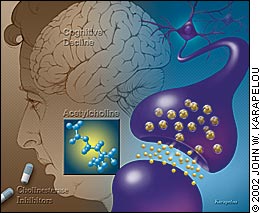
Am Fam Physician. 2002;65(11):2193

By now you've probably noticed that AFP has taken on additional components incorporating an evidence-based approach. We've added several new departments and revised author guidelines to incorporate a structured approach to identifying the evidence behind clinical recommendations in AFP. Authors are now required to supply labels identifying the strength of evidence for key recommendations (see the articles by Denise B. Freeman, D.P.M., page 2277, and Daisy A. Arce, M.D., and her colleagues, page 2283; and the levels-of-evidence definitions on page 2184). We've introduced series that focus on capturing evidence from meta-analyses, such as “Clinical Evidence: A Publication of BMJ Publishing Group” (see page 2321).
Over the past year, we've done a lot of talking about the philosophy behind such changes. Now it's your turn to tell us how well these enhancements are working, and we'll be checking back with you from time to time. Please take a minute to answer the following questions and fax a copy back to me at 913-906-6080. You can also e-mail feedback to me (jwright@aafp.org) or submit a formal letter to the editor (see instructions on page 2211).
1. The June 1, 2001 issue of AFP introduced “Cochrane for Clinicians: Putting Evidence into Practice,” a series based on reviews in the Cochrane Library. Examples: Can Reduced or Modified Dietary Fat Prevent Cardiovascular Disease? (January 1), Do NSAIDs Help in Acute or Chronic Low Back Pain (April 1), Is Alarm Intervention Effective in the Treatment of Enuresis? (May 1)
Have you read any of the “Cochrane for Clinicians” pieces?
Yes
No
Please rate the “Cochrane for Clinicians” series in terms of its value to you:
2. The December 1, 2001 issue of AFP re-introduced “Putting Prevention into Practice: An Evidence-Based Approach.” Examples: Counseling for Tobacco Cessation (December 1), Screening for Skin Cancer (April 1)
Have you read any of the “Putting Prevention into Practice” pieces?
Yes
No
Please rate the “Putting Prevention into Practice” series in terms of its value to you:
3. The December 15, 2001 issue introduced “U.S. Preventive Services Task Force: Recommendations and Rationale.” Examples: Screening for Lipid Disorders in Adults (January 15), Screening for Bacterial Vaginosis in Pregnancy (March 15), Screening for Skin Cancer (April 15), Aspirin for the Primary Prevention of Cardiovascular Events (May 15)
Have you read any of the USPSTF reports?
Yes
No
Please rate the USPSTF reports in terms of their value to you:
4. The January 1, 2002 issue introduced “Clinical Evidence: A Publication of BMJ Publishing.” Examples: Acute Otitis Media (February 1), Low Back Pain (March 1), Depressive Disorders (April 1), Migraine Headache (May 1)
Have you read any of the “Clinical Evidence” series?
Yes
No
Please rate the “Clinical Evidence” series in terms of its value to you:
5. AFP has introduced a system of labeling the strength of evidence supporting clinical recommendations in the journal (see page 2184). How would you rank the usefulness of this system?